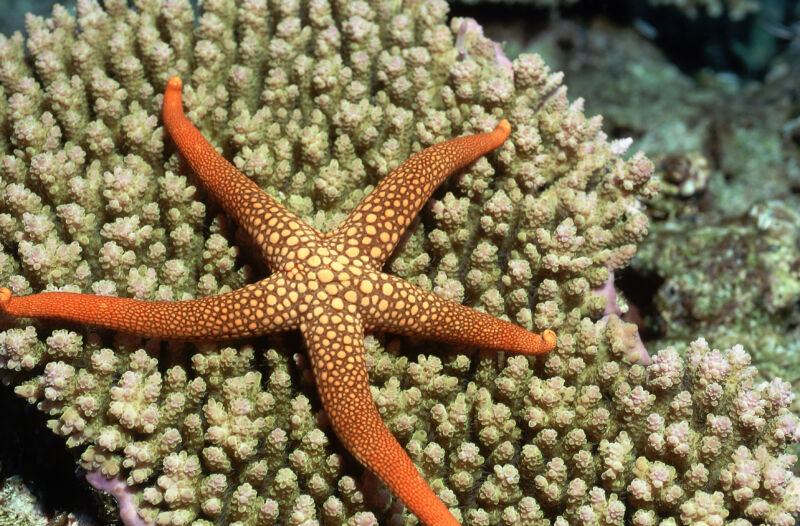A single peptide helps starfish get rid of a limb when attacked

For many creatures, having a limb caught in a predator’s mouth is usually a death sentence. Not starfish, though—they can detach the limb and leave the predator something to chew on while they crawl away. But how can they pull this off?
Starfish and some other animals (including lizards and salamanders) are capable of autonomy (shedding a limb when attacked). The biology behind this phenomenon in starfish was largely unknown until now. An international team of researchers led by Maurice Elphick, professor of Animal Physiology and Neuroscience at Queen Mary University of London, have found that a neurohormone released by starfish is largely responsible for detaching limbs that end up in a predator’s jaws.
So how does this neurohormone (specifically a neuropeptide) let the starfish get away? When a starfish is under stress from a predatory attack, this hormone is secreted, stimulating a muscle at the base of the animal’s arm that allows the arm to break off.
